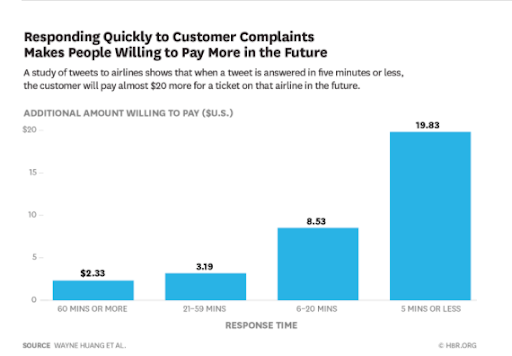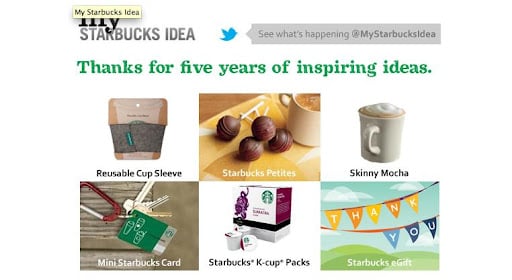Imagine buying a new smartphone on a website and choosing an in-store pickup to bypass delivery delays. You expect an effortless, quick store visit but encounter a different reality. It's not fast or simple, making you regret buying from the retailer. So, how can the company know this information to avoid losing sales and repeat buyers? The answer is intentionally instituting a Voice of Customer (VoC) program, which my team did when working at a top-tier telecommunications company.

Despite the seamless synergy between our e-commerce and retail management teams, we encountered a sharp decline in customer satisfaction scores and a surge in social media complaints. The root cause of this issue was unclear, necessitating a more in-depth exploration. Through comprehensive conversations with recent customers, we discovered they were frustrated by the lengthy waiting periods at our retail stores, a problem exacerbated by the influx of in-store shoppers.
Armed with this newfound understanding, we realized an immediate need to shift our approach, which we would have overlooked without a focused VoC strategy. Based on customer feedback, we created a separate queue for in-store pickups, leading to a significant uptick in customer satisfaction scores, a flurry of positive reviews, and a noticeable increase in profitable referrals. This experience underscores the invaluable role of VoC in identifying key customer pain points and executing practical solutions to overcome roadblocks.
Although customer feedback isn't a novel concept, its implementation varies across organizations. This article offers VoC examples that shed light on its significance and applicability to businesses across different industries.
Using Voice Of Customer (VoC) Feedback As A Warning System
VoC feedback is an essential tool businesses can leverage to understand and address customer frustration for risk management. While paying attention to ALL customer comments and reviews is necessary, specific keywords can signal potential legal disputes. Phrases like "legal" and "lawsuit" are immediate red flags requiring close leadership attention. Reviews on platforms like Google My Business, Yelp, and TripAdvisor, comments on social media, and survey responses provide valuable insights. In addition, businesses can identify potential risks by analyzing this data using sophisticated AI-powered VoC tools before they escalate.
Case in Point: United Airlines
The infamous United Airlines passenger removal incident is one illuminating case demonstrating the importance of proactive customer complaint management. In an overbooking situation, a passenger was forcibly removed from a United Airlines flight, leading to widespread backlash. Fellow passengers recorded the incident, which went viral on social media, leading to a public relations crisis for the airline.
In the aftermath of the incident, United Airlines acknowledged its mistake and pledged to "do better." It appears they used the crisis as a learning opportunity and revised its customer service policies, crew training, and response to customer complaints. By transforming its response to consumer feedback, United Airlines worked towards rebuilding trust with its customers, which is crucial in a highly competitive industry.

United Airlines is just one of many that suffer from public customer complaints requiring massive company actions. Southwest Airlines is another example. This CNN article explains that Federal officials had to act on "thousands" of customer complaints after its days-long holiday travel meltdown—including criticisms that Southwest is not making good on its pledge to issue refunds. There are many lessons we all can learn from the Southwest Airlines incident, including a reminder that it takes a lifetime to build an excellent brand reputation and a moment to destroy it! For more on that, I wrote about avoiding customer disruptions and mitigating business risk—give it a read.
By being more proactive and responsive to customer feedback, businesses can anticipate issues, manage customer dissatisfaction effectively, and avoid potential legal matters that can be very costly. Also, as Harvard Business Review reveals, responding quickly to customer complaints makes people more forgiving and, in some cases, willing to pay more in the future.

Using VoC in Market Messaging
When asking company leaders what makes their product or service stand out in a crowded marketplace, they often do not know the answer. Yet, the significance of a compelling value proposition cannot be understated—it impacts customer loyalty and decision-making. That's where Voice of Customer programs come into play, enabling leaders to know if their messaging resonates and the reasons why or why not.
Testing value proposition with real customers, not just employees, involves asking targeted questions through surveys, focus groups, and other VoC methods. A sampling of questions include:
- "On a scale of 1-10, how compelling do you find our value proposition message?"
- "Does it make you feel more inclined to purchase our solution? Why or why not?"
- "Is there anything in our marketing messages confusing or unclear?"
- "If you could change one thing about our marketing messages, what would it be?"
- "How would you describe our product/service to a friend? Do you think our messaging accurately portrays what we're offering?"
In general, leveraging VoC feedback provides the ability to craft market messaging that meets customer expectations and strikes a chord with audiences. In addition, employing VoC best practices and insights in continuous testing and refinement strengthens its relevance and amplifies its appeal, contributing to enhanced customer satisfaction and loyalty.
Applying VoC in New Product Development
Product development is a complex process for any business. Success hinges not only on the functionality or aesthetics but also significantly on how well it aligns with customers' wants and needs. This is where the Voice of the Customer plays a critical role.
VoC programs during the early stages of product development offer the unique advantage of understanding and shaping products based on real customer insights rather than mere assumptions or guesswork.
VoC feedback helps tap into customers' minds, providing a clearer picture of their expectations, preferences, and pain points.
VoC can be instrumental in designing products that resonate and increases the likelihood of a successful product launch.
Case Study #1: LEGO
A real-life illustration of the power of early-stage VoC is LEGO's approach to new product development. In the mid-2000s, the company initiated the "LEGO Ideas" platform, enabling fans to submit their concepts for new LEGO sets. The community votes on ideas, which may be eligible for potential production if they meet a certain threshold. This innovative application of VoC has led to some of the most popular and best-selling LEGO sets, proving the power of directly involving customers in product development.
Case Study #2: Starbucks
Starbucks, the globally renowned coffee company, is another brand that presents an exceptional example of effectively leveraging a Voice of Customer (VoC) program. The company launched a "My Starbucks Idea" platform, an online community for people to share, vote, discuss, and implement ideas on enhancing the Starbucks experience, both in and out of stores. Examples generated from VoC include:
- Splash sticks that have kept clothes cleaner for the past five years. (Idea #1)
- Mobile payment transactions at Starbucks US stores. They are now processing 3 million mobile payment transactions per week. (Idea #202)
- New flavors, including skinny beverages, Mocha Coconut Frappuccino Blended Beverages™ (Idea #144), Hazelnut Macchiato (Idea #275), and Starbucks VIA® Pumpkin Spice Flavored Coffee. (Idea #233)
- Cake pop treats are based on customers sharing ideas for smaller-sized treats. More than 5.8 million buyers. (Idea #128)

LEGO and Starbucks examples demonstrate the value of asking customers for feedback to stay ahead of market trends and offer products that directly respond to their customer's desires. These real-world cases are a testament to the transformative power of VoC programs. Moreover, they highlight the importance of listening to customer feedback and actively seeking insights to incorporate into strategic decisions. VoC needs to be proactive, not only reactive!
Related read: Best Idea Management Software Systems
Using VoC in Developing and Changing Pricing Strategies
As business dynamics evolve and markets fluctuate, adjusting the prices of products and services is inevitable.
Companies that fail to price correctly can leave thousands or even millions on the table. In the 1990s, hard-disk drive manufacturers invested $6.5 billion in research and development. These innovations resulted in significant innovation as storage capacity improved by 1,000%. However, manufacturers failed to price these innovations correctly, resulting in net losses of $800M, according to a McKinsey analysis.
On the other hand, the correct pricing approach can lead to market growth. So, how can businesses strike a balance without risking a customer exodus or compromising profitability? The answer, again, is leveraging a Voice of the Customer (VoC) program. VoC serves as an insightful compass, guiding businesses to the price point customers are willing to accept. This sweet spot enhances the chances of meeting customer satisfaction while simultaneously achieving financial goals.
Case Study #3: Netflix
Netflix is a prime example of a brand using VoC to adjust pricing strategies, despite their price changes often provoking negative discussions, as seen on social media platforms. Netflix had been aware for years that password sharing was a common practice among subscribers, and in an increasingly competitive market, this lost revenue was growing unbearable. Rather than carrying out another substantial price hike, Netflix chose to move forward with stricter policies around account sharing, The move would serve to generate new, ongoing revenue from millions of existing users who weren't actually account holders. While the decision was met with a few weeks of collective grumbling, the gamble seems to have paid off—at the time of writing, stock prices for Netflix have more than recovered and are now the highest they've been since February of 2022.
To make well-informed pricing decisions, here are a sampling of questions to ask customers and potential buyers:
- "How do our prices compare to those of similar products/services in the market?"
- "Would a price decrease make you more likely to use our product/service more frequently?"
- "Would you be interested in a premium version of our product/service at a higher price?"
- "Would you prefer lower prices with fewer features or higher prices with more?"
- "How likely are you to continue using our product/service if we increase the price by 5%, 10%, 15%?" Why?
I encourage you to get customer feedback before altering prices, ensuring alignment with customer expectations. Otherwise, price changes could backfire, resulting in churn and negative reviews that are hard to overcome.
Make Your Org the Next Case Study
VoC feedback's role in business success is tremendous. Active listening to customers via surveys, social media monitoring, and other channels enables businesses to identify issues, mitigate risks, and refine offerings. VoC feedback shapes product development, fosters customer-centricity, and assists in achieving profitability targets. It offers valuable insights for pricing optimization and highlights customer experience's impact on brand loyalty. By harnessing the voice of the customer, businesses can build stronger relationships, improve customer experiences, and gain a competitive edge.
For more insights like this, subscribe to the CX Lead newsletter.


